If you see a raptor perched along the highway, chances are it’s a Red-tailed Hawk. You certainly may see other raptors, but in my experience the Red-tailed Hawk is by far the most common.
Why do they like highways? Food. A hawk can spot a rodent crossing an open road a lot easier than if it was running through a grassy field. So the hawks on lampposts and other high perches are waiting to spot rodents exposed when running across the pavement. Sometimes their scurrying is cut short by impassable dividers between highway lanes, making them easier to spot and snatch. Roadkill is even easier.
Unfortunately, this situation leads to hawks being injured or killed in collisions with cars. Once the hawk targets its prey, it is completely focused on the meal and does not see cars coming from the sides. You can help avoid these incidents by never littering on the highway. If an apple core is tossed out of a car window, it will attract a rodent, which in turn will attract a hawk. It’s a deadly chain of events that can be easily prevented… please don’t litter.
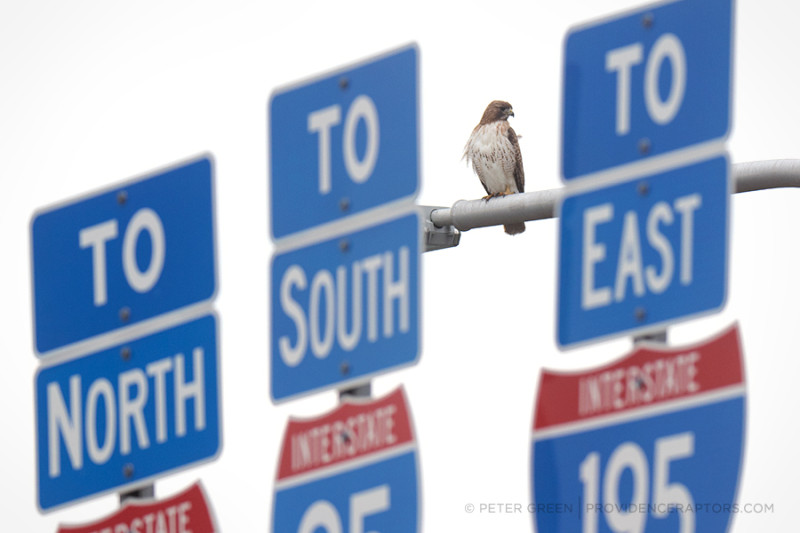
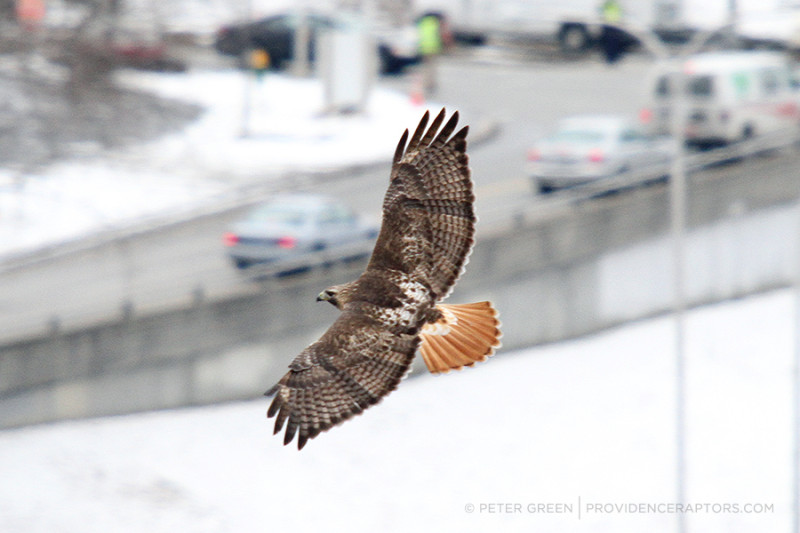
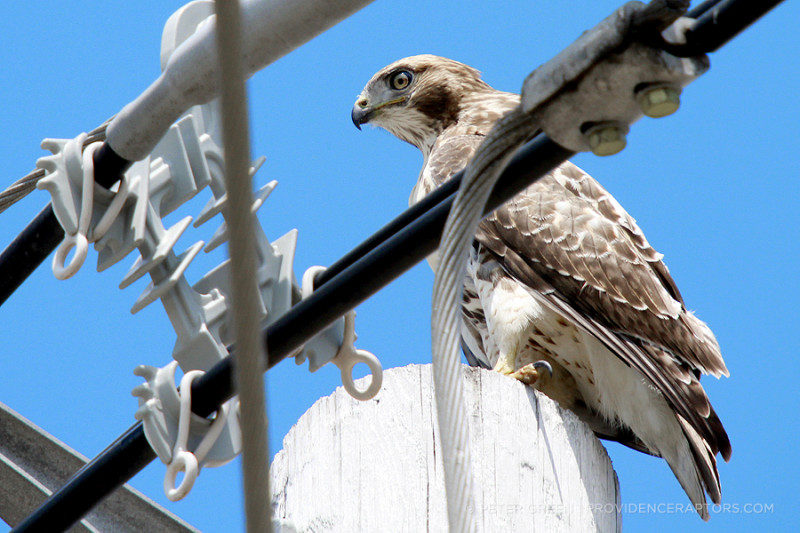
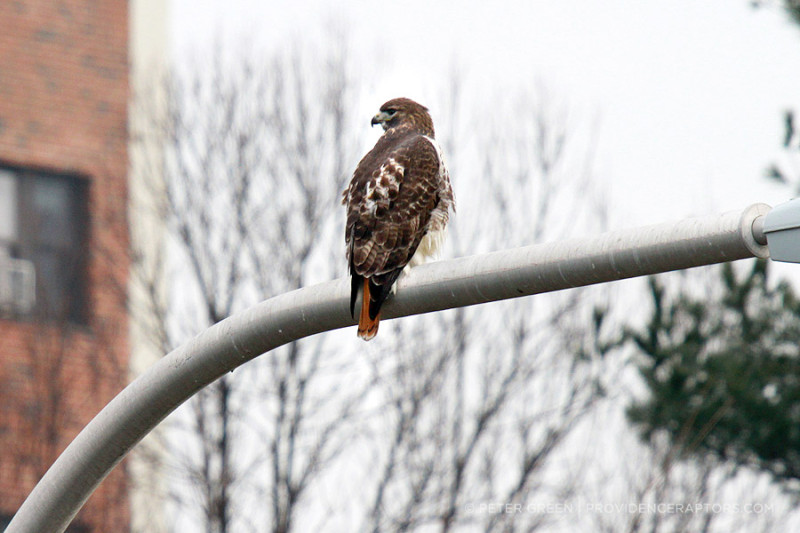
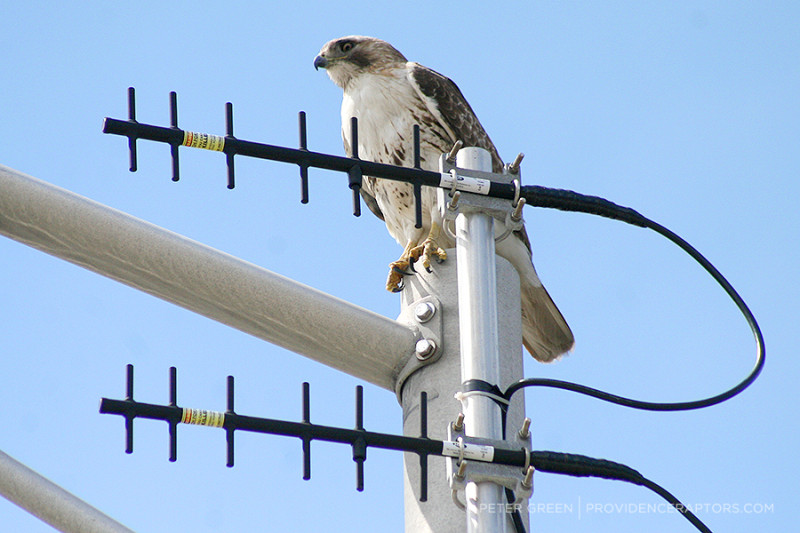
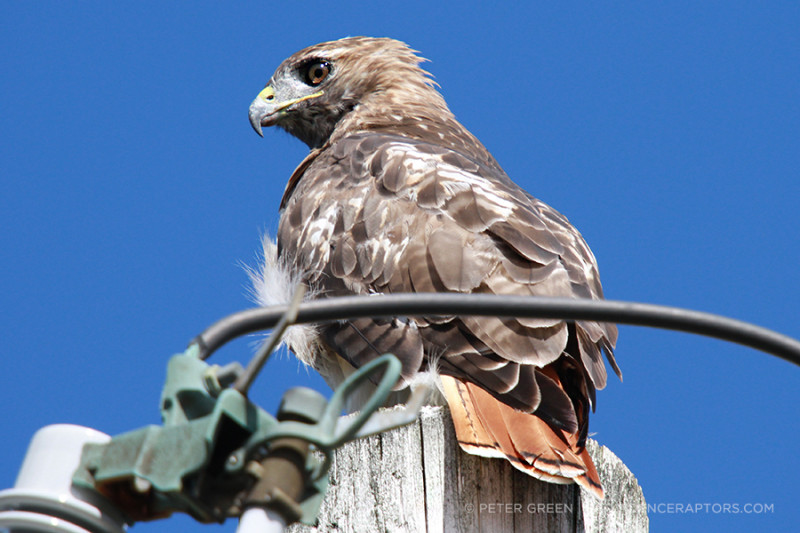
Red-Tailed Hawks do not exclusively eat rodents, they also hunt other birds like pigeons.
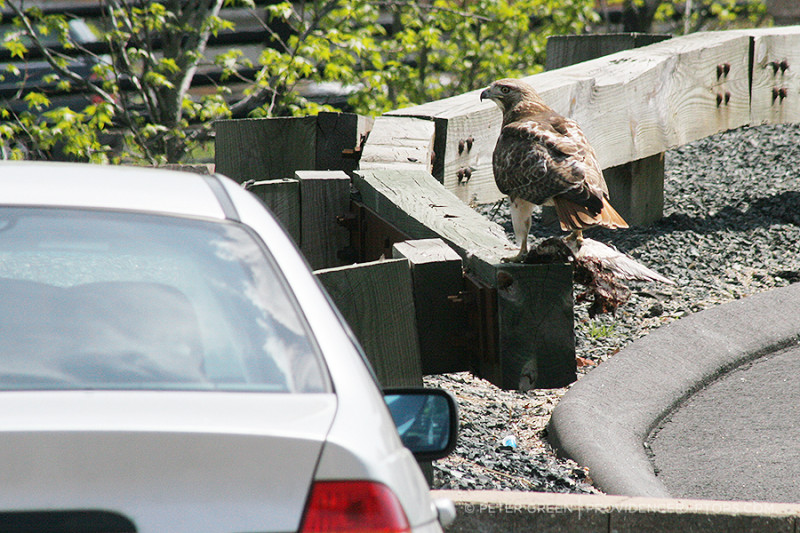
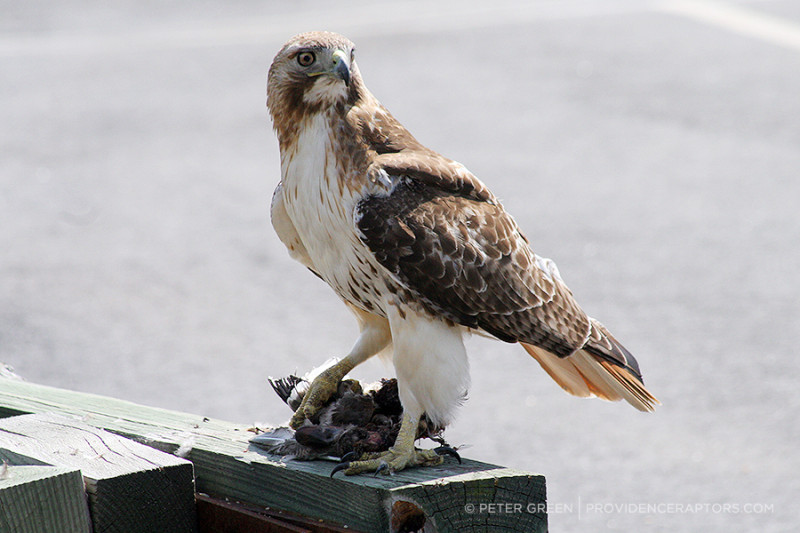
Juvenile Red-tailed Hawks have striped tails (see below)… they do not “earn” the red tail until they survive to one year of age and complete their first molt.
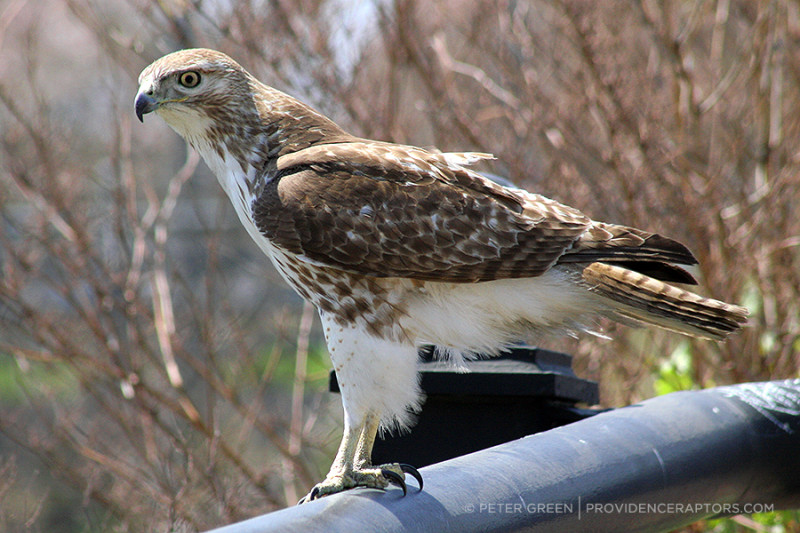
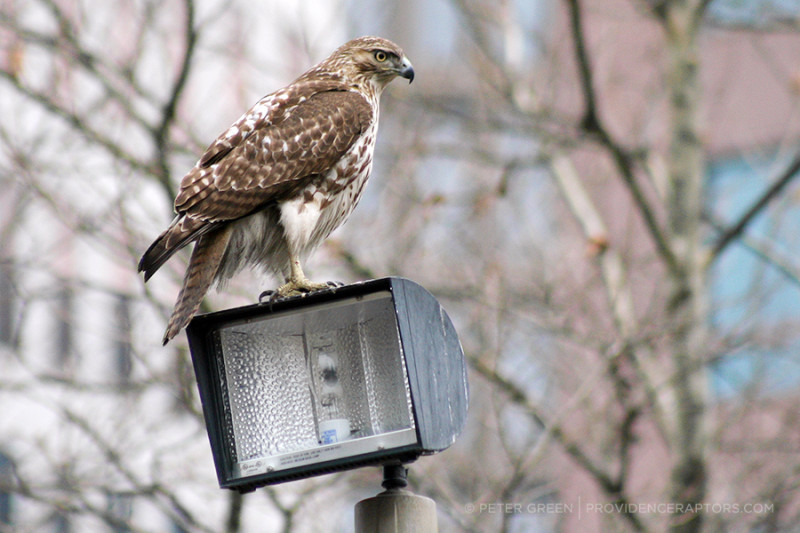
If you see two hawks perched together, they are either a bonded mating pair, or young siblings. The striped tails on the hawks below indicate these are siblings.
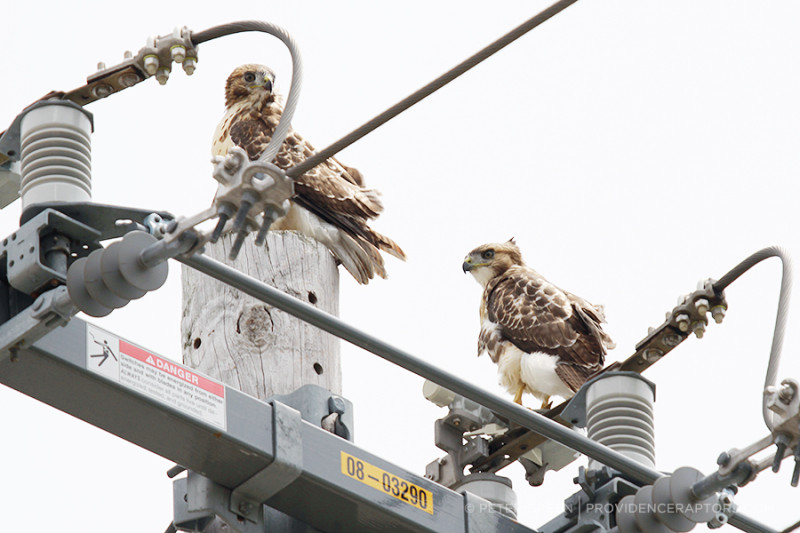
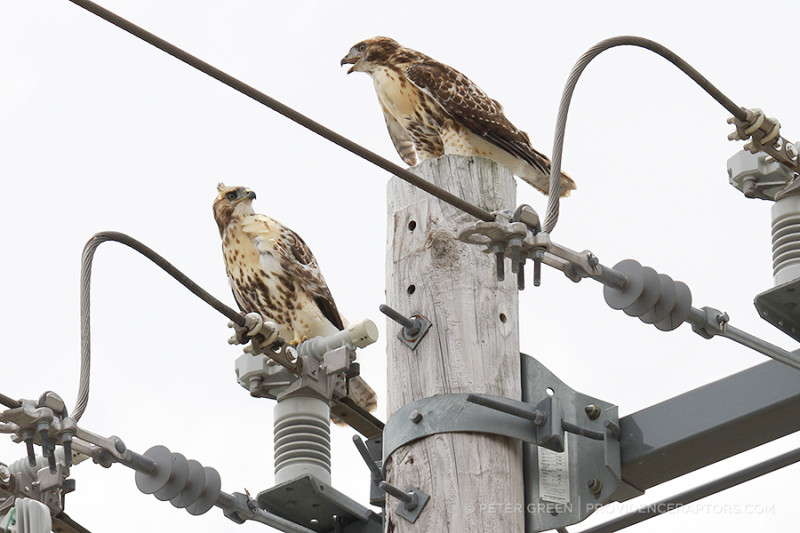
American Kestrels perched along the highway are also looking for rodents, just smaller ones. Although they are sometimes colloquially known as “sparrow hawks,” kestrels are not hawks, they are falcons.
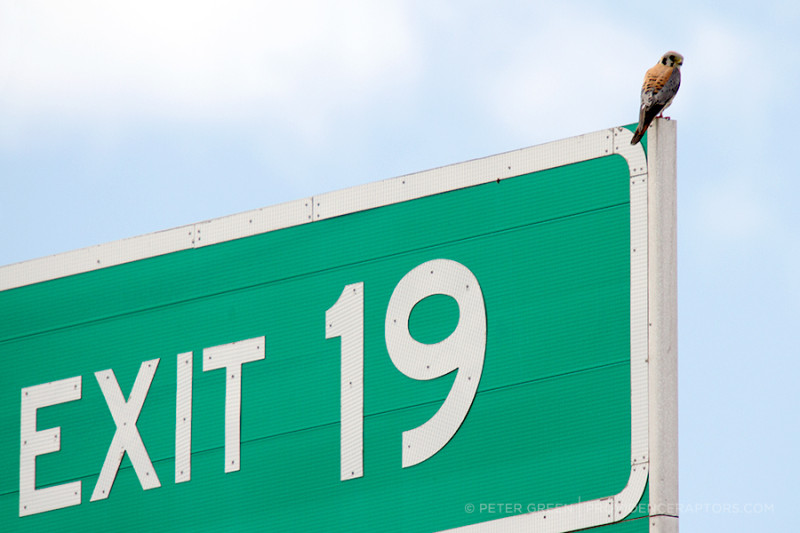
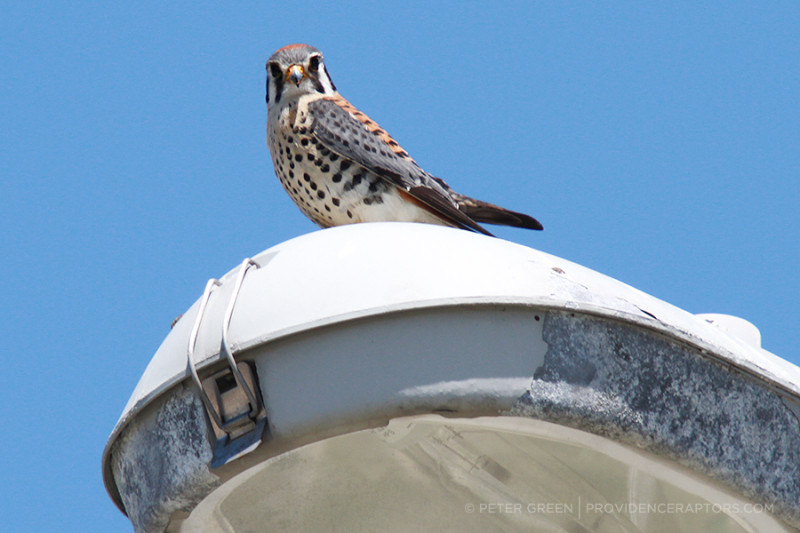
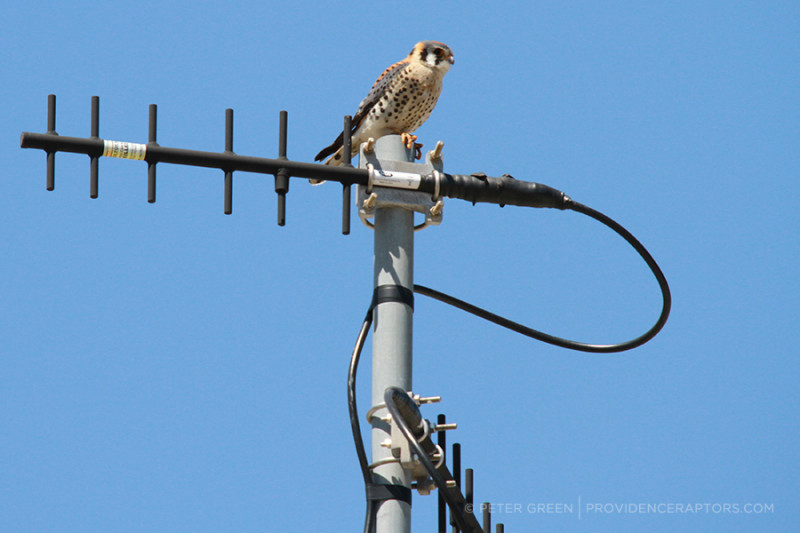
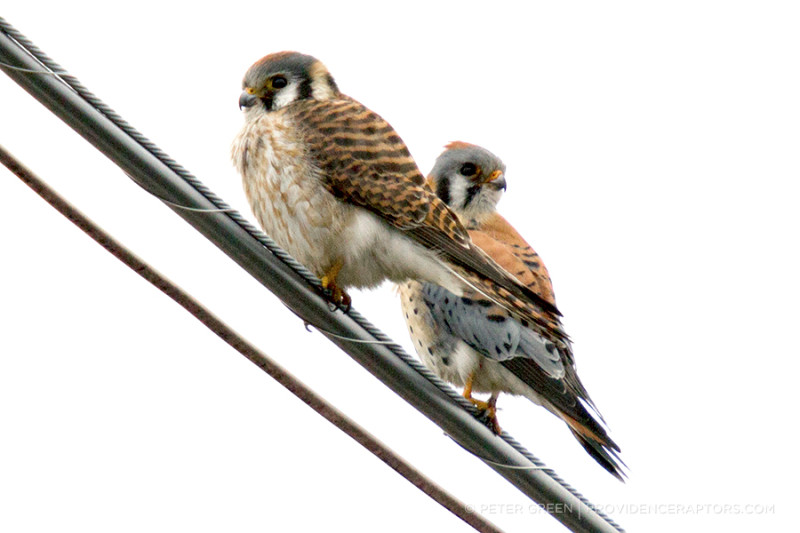
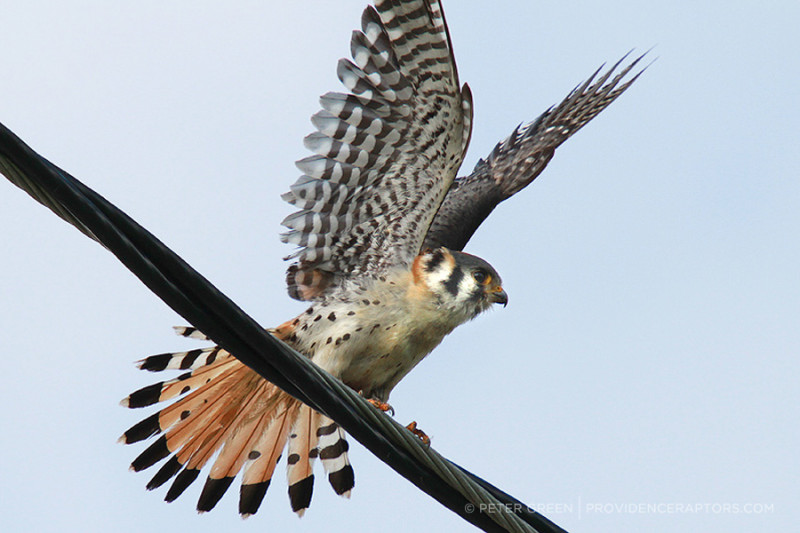
During the summer, it’s common to see Ospreys nesting on cellphone towers along the highway, but they do not hunt for food on the pavement. Ospreys eat fish, so they exclusively hunt rivers and lakes.
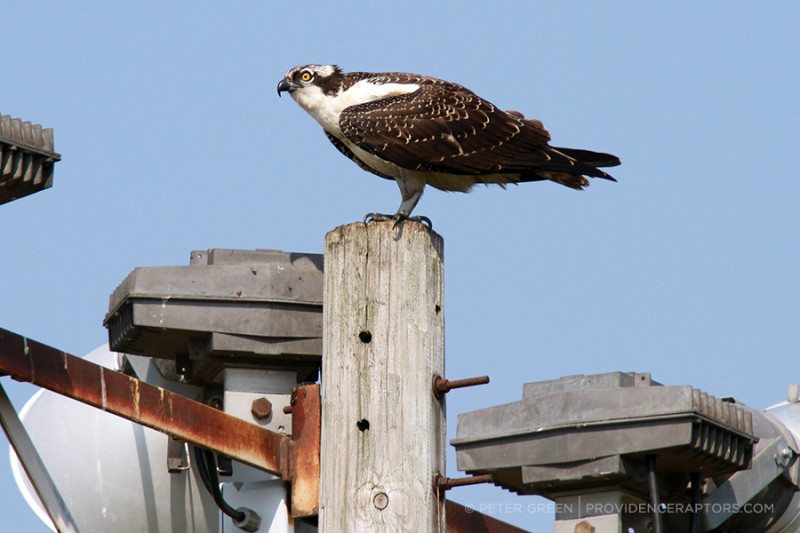
Lastly, some more Red-tailed Hawks…
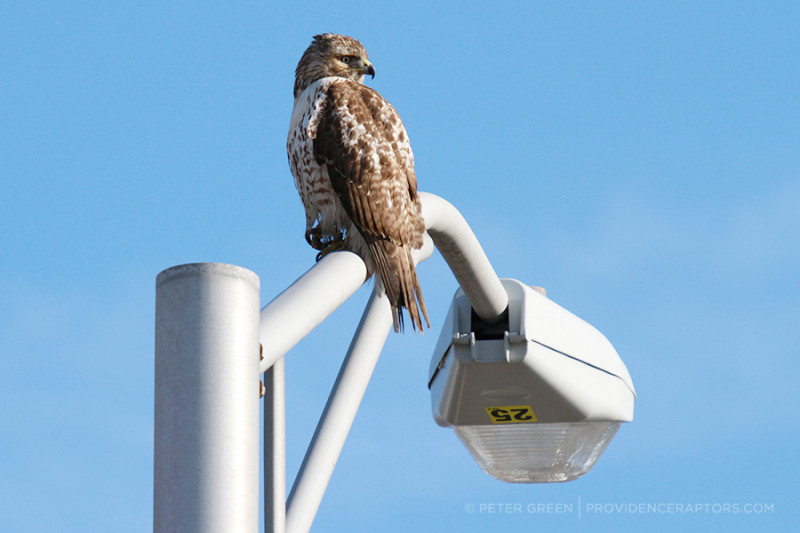
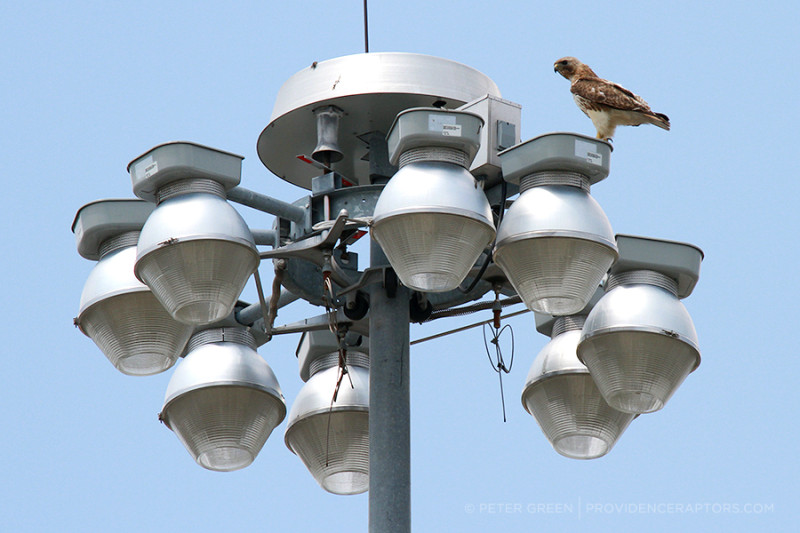
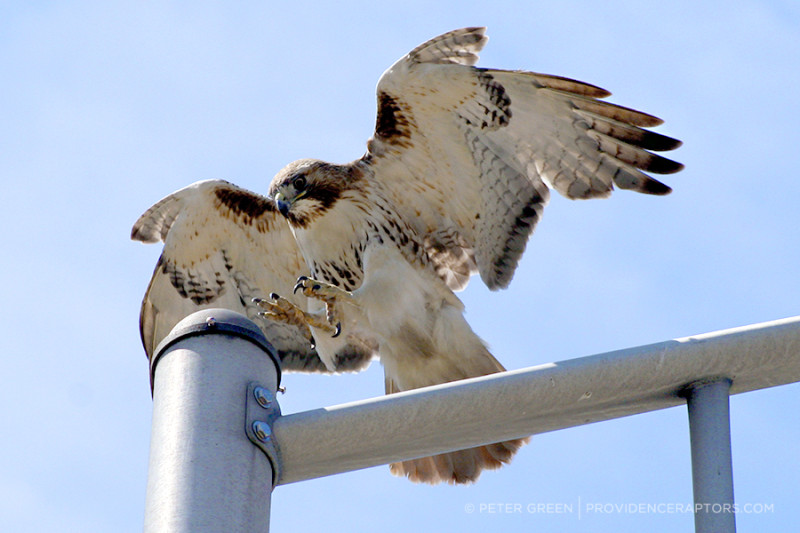
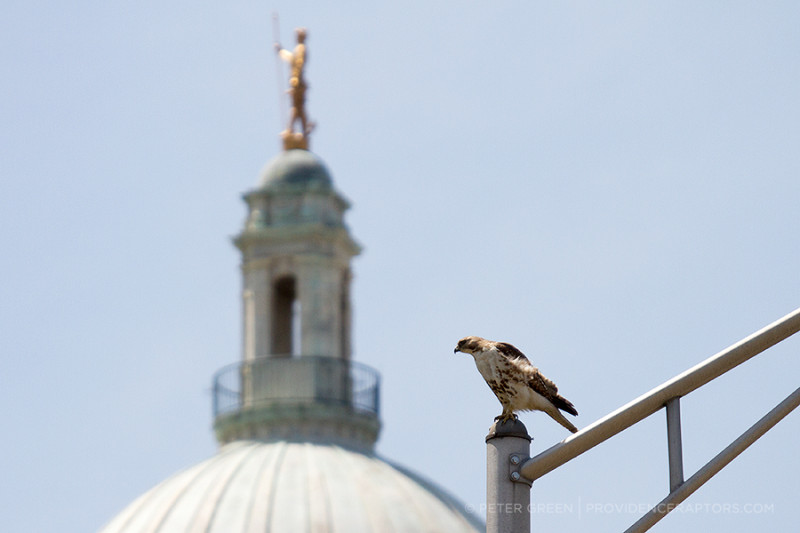
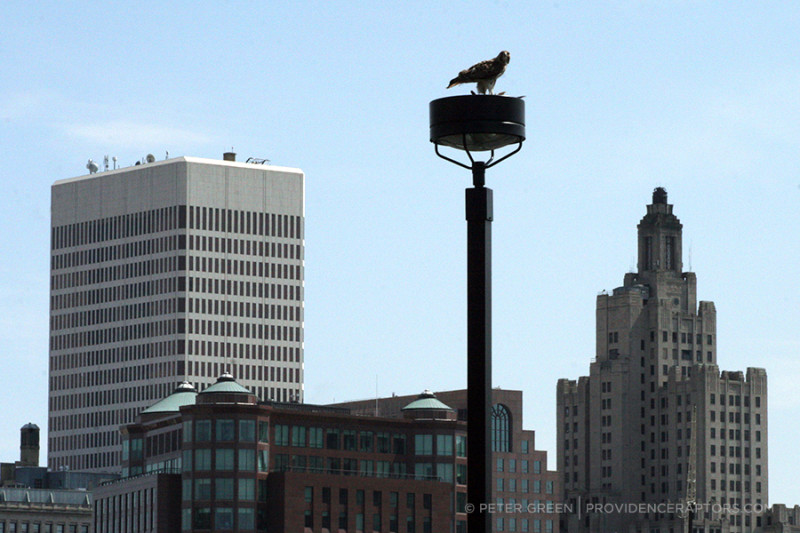
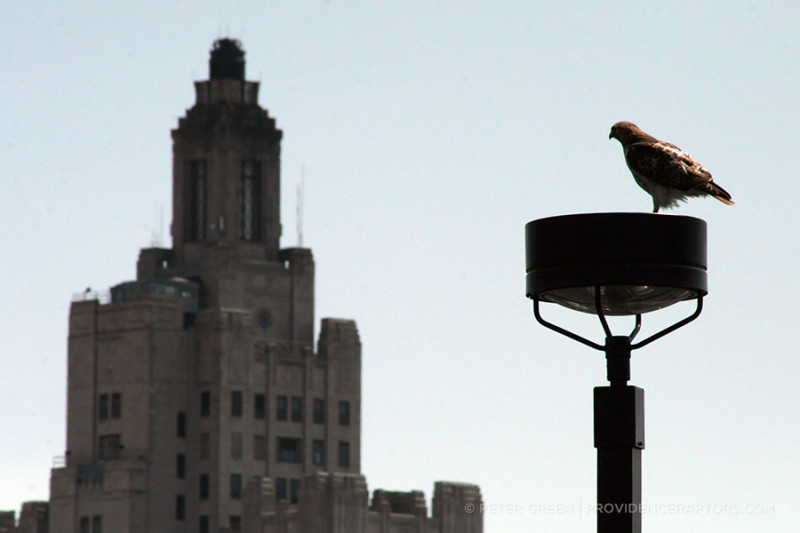
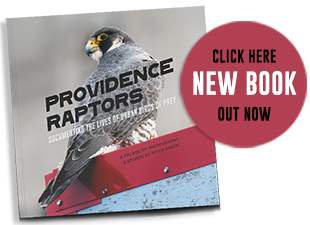
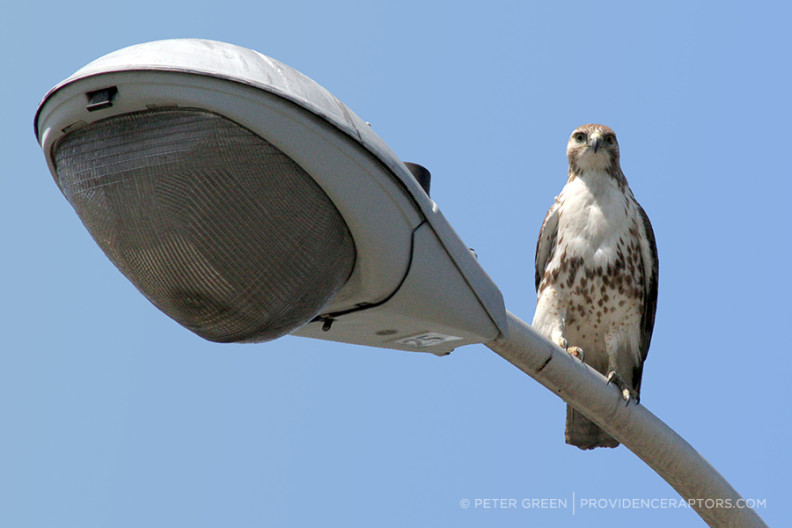
11 Comments
Thank you for this really informative post!
I love your website and photos. I grew up in Providence, and although I don’t remember seeing any birds of prey in the city, my family used to always look for hawks when we were driving. Now I’m permanently in the habit of checking lamp posts and trees for hawks. About 9 years ago I moved to New Mexico and got into bird watching, and now I monitor raptor nests along the Rio Grande in Albuquerque and work with educational raptors. I love seeing your photos of raptors against the backdrop of familiar buildings in Providence, and knowing that all these birds are there.
Thanks so much, Allison, this is excellent to hear, I appreciate that you took the time to write such a nice comment. Good luck with your important work!
Great info Peter. On my way to Warwick and back from Woonsocket 2 weeks ago, I spotted 8 hawks along route 295. Two almost lost their lives darting for prey as the cars zoomed by.
Still one of my favorite raptor galleries on the ‘Net. Love seeing them take advantage of our infrastructure (.. so long as they are careful not to short-circuit!)
Thanks Perry, I appreciate it! Those wires actually can be a danger… an osprey nest on a telephone pole caught fire this summer!
I see the Red-Tails all the time in northern RI along the highways. Usually when NOT carrying my camera!! When I do bring it, they’re gone!!! They must be ‘on’ to me!!!
I have been fascinated with these sentinels of the Kansas highways for some time now. I drive on occasio few n from North Newton to Lawrence, Kansas and count how many of the hawks I see. 50 is the most I have counted on that the drive , one way. Sadly I count the ones I see that have been killed. 45 live, 5 dead.
I feel they hunt on the edges of the highway as all the fields around are devoid of prey, since they are plowed or planted. The last vestiges of wild is found in the tall grass. The hawks are usually facing the highway, with their backs turned away from the vast fields behind them that offer no sustenance. They are a beautiful creature. So sad they have been so heavily influenced by modern man.
We’ve got a red tail hawk eating very old roadkill in the Federal Hill area. My dog walked within a foot of him or her the other day and the bird didn’t spook, it was perched on top of a flattened squirrel. It then watched me as I walked about 20 feet away, then it used it’s talons to scrape the animal from the road. It flew to a perch and ate it’s snack. Saw him/her a day later outside my apartment doing the same thing.
Excellent :)
Sadly enough these birds will all disappear and die from being hit bye cars, then run over! I have seen it so many times through the cities. Its absolutely heartbreaking! All light poles should have bird spikes on them to help prevent this!!!